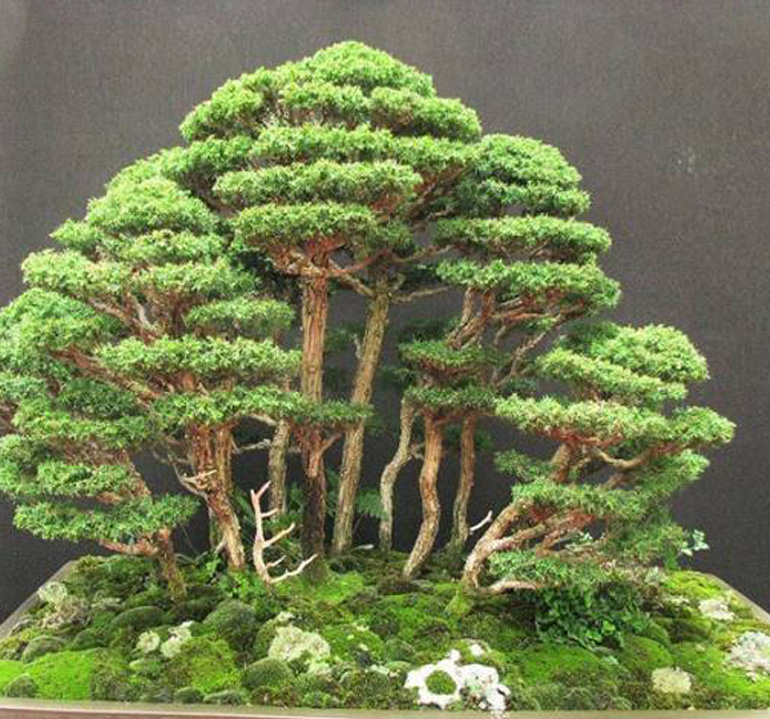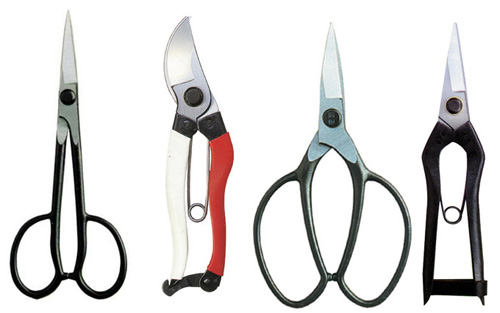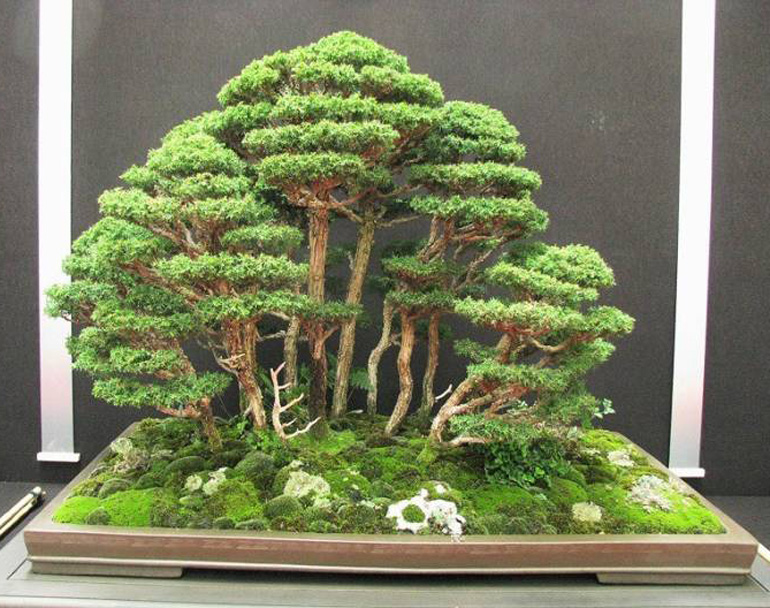
Close up of a Red cedar bonsai forest. I'm going to assume that it's what we call the Eastern red cedar, which is actually a juniper (Juniperus virginiana), though there are trees in other parts of the world that are commonly called Red cedar (none are Cedrus or true cedars). Our source, an online company that sells 'bonsai' seeds is no help with identification, nor with the owner of this forest.
I must admit I enjoy trying to sort out the common name versus botanical name confusion when it comes to certain trees. The other day we featured a Northern white cedar, which is really an Arborvitae (Thuja occidentalis) and a couple days before that we featured a couple Atlas cedars (Cedrus atlantica), which happen to be one of the three species of true cedars on this planet. Confused? Bored? Okay enough for now, but you haven’t heard the end of it
25% off Okatsune Tool Sale
Ends Tonight at 11:59pm EDT

Four of my favorite Okatsune shears
all four cut like butter and last forever
I’ve been digging and potting dozens of field grown larch
the past few days and three of the four tools above are what I use
(along with a spade, root hook, Kamaki loppers, an Okatsune saw
and our Masters Grade Koyo Sword Shears)
.
In the image above, the one on the left is the Okatsune bonsai shear and it’s my favorite of all my bonsai shears. The one with the red handle is the 8″ Okatsune bypass shears which I use for heavy branches and roots and is simply the best bonsai/garden bypass shear I’ve ever used. The one with large loop handles is the Okatsune heavy duty hand snips, my root shear of choice for medium and small roots. I don’t use the Okatsune pine needle shears (on the right) for larches, though it’s also a great tool

The uncropped photo of the forest above